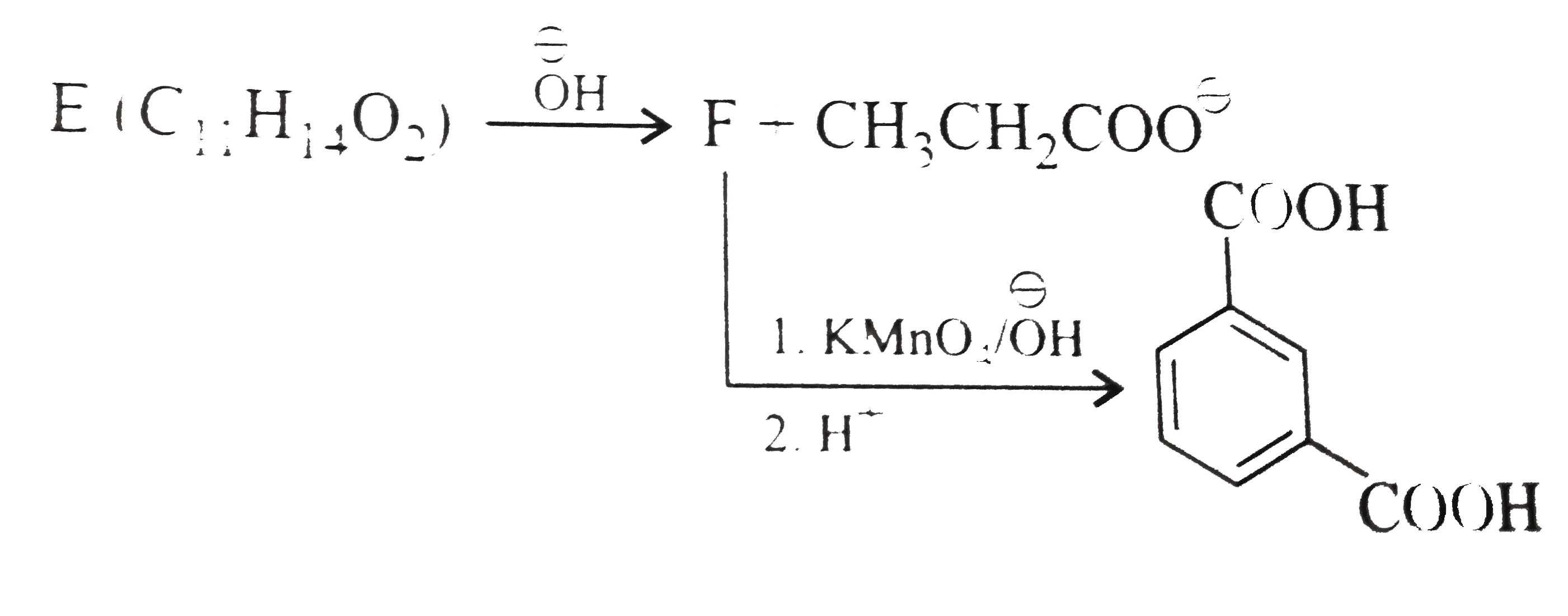Write down the Lewis structures of : (i) CO2(ii)CN−
To draw the Lewis structures for CO2 (carbon dioxide) and CN− (cyanide ion), we will follow these steps:
Step 1: Determine the total number of valence electrons.
- For \( CO_2 \):
- Carbon (C) has 4 valence electrons.
- Each Oxygen (O) has 6 valence electrons, and there are 2 oxygen atoms.
- Total = \( 4 + 2 \times 6 = 16 \) valence electrons.
- For \( CN^- \):
- Carbon (C) has 4 valence electrons.
- Nitrogen (N) has 5 valence electrons.
- The negative charge adds 1 additional electron.
- Total = \( 4 + 5 + 1 = 10 \) valence electrons.
Step 2: Identify the central atom.
- In \( CO_2 \), carbon is the central atom because it is less electronegative than oxygen.
- In \( CN^- \), carbon is also the central atom because it is less electronegative than nitrogen.
Step 3: Draw the skeleton structure.
- For \( CO_2 \):
- Place carbon in the center and connect it to the two oxygen atoms:
O|C|O
- For \( CN^- \):
- Place carbon in the center and connect it to nitrogen:
N∣C
Step 4: Distribute the remaining valence electrons to satisfy the octet rule.
- For \( CO_2 \):
- Start by forming single bonds (2 electrons) between C and each O. This uses 4 electrons, leaving 12.
- Form double bonds between C and each O to satisfy the octet rule:
O=C=O
- Each atom now has 8 electrons around it: Carbon has 4 from the double bonds, and each Oxygen has 4 from the double bonds.
- For \( CN^- \):
- Form a triple bond between C and N:
N≡C
- The triple bond uses 6 electrons, leaving 4 electrons to be placed as a lone pair on carbon (due to the negative charge):
:N≡C:
- Carbon now has 5 electrons (3 from the triple bond and 2 from the lone pair), and nitrogen has 8 electrons (6 from the triple bond and 2 from the lone pair).
Step 5: Check the octet rule.
- For \( CO_2 \):
- Carbon has 8 electrons, and each Oxygen has 8 electrons. The octet rule is satisfied.
- For \( CN^- \):
- Carbon has 8 electrons (3 from the triple bond and 2 from the lone pair), and nitrogen has 8 electrons. The octet rule is satisfied.
Final Lewis Structures:
- \( CO_2 \):
O=C=O
- \( CN^- \):
:N≡C:
- For \( CO_2 \):
- Carbon (C) has 4 valence electrons.
- Each Oxygen (O) has 6 valence electrons, and there are 2 oxygen atoms.
- Total = \( 4 + 2 \times 6 = 16 \) valence electrons.
- Carbon (C) has 4 valence electrons.
- Nitrogen (N) has 5 valence electrons.
- The negative charge adds 1 additional electron.
- Total = \( 4 + 5 + 1 = 10 \) valence electrons.
- In \( CO_2 \), carbon is the central atom because it is less electronegative than oxygen.
- In \( CN^- \), carbon is also the central atom because it is less electronegative than nitrogen.
- For \( CO_2 \):
- Place carbon in the center and connect it to the two oxygen atoms:
O|C|O
- Place carbon in the center and connect it to nitrogen:
N∣C
- For \( CO_2 \):
- Start by forming single bonds (2 electrons) between C and each O. This uses 4 electrons, leaving 12.
- Form double bonds between C and each O to satisfy the octet rule:
O=C=O
- Each atom now has 8 electrons around it: Carbon has 4 from the double bonds, and each Oxygen has 4 from the double bonds.
- Form a triple bond between C and N:
N≡C
- The triple bond uses 6 electrons, leaving 4 electrons to be placed as a lone pair on carbon (due to the negative charge):
:N≡C:
- Carbon now has 5 electrons (3 from the triple bond and 2 from the lone pair), and nitrogen has 8 electrons (6 from the triple bond and 2 from the lone pair).
- For \( CO_2 \):
- Carbon has 8 electrons, and each Oxygen has 8 electrons. The octet rule is satisfied.
- Carbon has 8 electrons (3 from the triple bond and 2 from the lone pair), and nitrogen has 8 electrons. The octet rule is satisfied.
- \( CO_2 \):
O=C=O
- \( CN^- \):
:N≡C:
Topper's Solved these Questions
- CHEMICAL BONDING AND MOLECULAR STRUCTUREBOOK - PRADEEPCHAPTER - CHEMICAL BONDING AND MOLECULAR STRUCTUREEXERCISE - ADDITIONAL QUESTIONS (SHORT ANSWER QUESTIONS)
62 Videos
- CHEMICAL BONDING AND MOLECULAR STRUCTUREBOOK - PRADEEPCHAPTER - CHEMICAL BONDING AND MOLECULAR STRUCTUREEXERCISE - ADDITIONAL QUESTIONS (LONG ANSWER QUESTIONS)
13 Videos
- CHEMICAL BONDING AND MOLECULAR STRUCTUREBOOK - PRADEEPCHAPTER - CHEMICAL BONDING AND MOLECULAR STRUCTUREEXERCISE - NCERT EXAMPLAR PROBLEMS ( MULTIPLE CHOICE QUESTIONS BASED ON THE GIVEN COMPREHENSION )
4 Videos
- APPENDIXBOOK - PRADEEPCHAPTER - APPENDIXEXERCISE - MODEL TEST PAPER <br> (Section C )
9 Videos
- CLASSIFICATION OF ELEMENTS AND PERIODICITY IN PROPERTIES BOOK - PRADEEPCHAPTER - CLASSIFICATION OF ELEMENTS AND PERIODICITY IN PROPERTIES EXERCISE - Competition Focus (Jee Main and Advanced / Medical Entrance ) ( Assertion - Reason Type Question ) (Type II)
12 Videos
Similar Questions
Write the Lewis structure for CNΘ ion .
View SolutionWrite the Lewis dot structure of CO2−3 ion .
View SolutionWrite the Lewis structures for
(i) CO
(ii) NH2CONH2 (urea)
(iii) H2CCH2 (ethene)
(iv) HNO3
View SolutionWrite the Lewis dot structure of the nitrite ion (NOΘ2) .
View SolutionWrite down the structures of the (E) and (F).
 .
.
View SolutionDraw the Lewis structure of BeCl2.
View SolutionWrite Lewis dot structure of HCOOH.
View SolutionWrite the Lewis dot structure of CO2−3 ion .
View SolutionWrite the resonance structure of CO2 .
View SolutionWrite the Lewis dot structure of CO molecule .
View Solution
